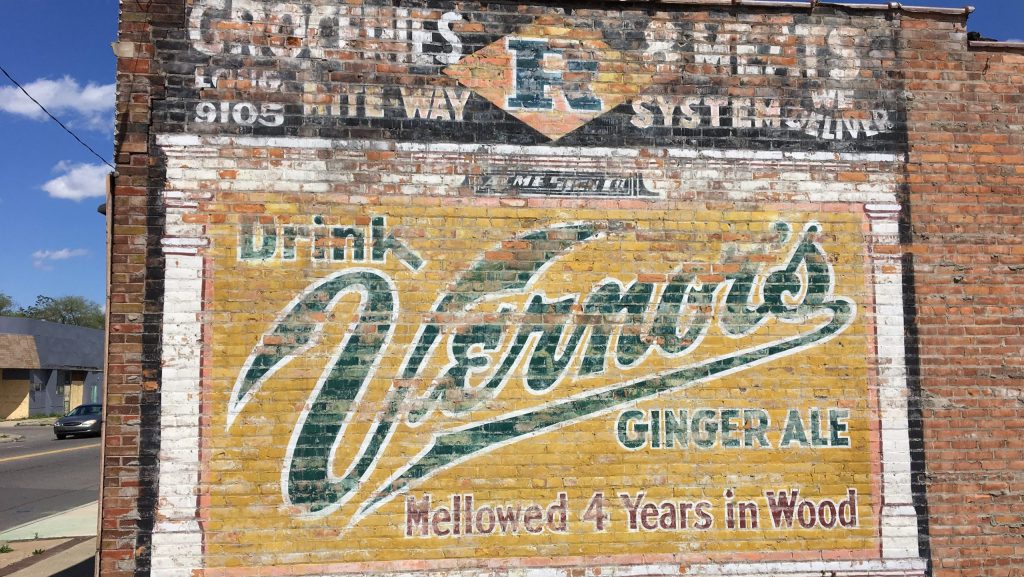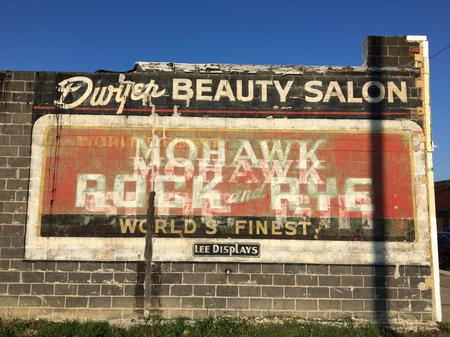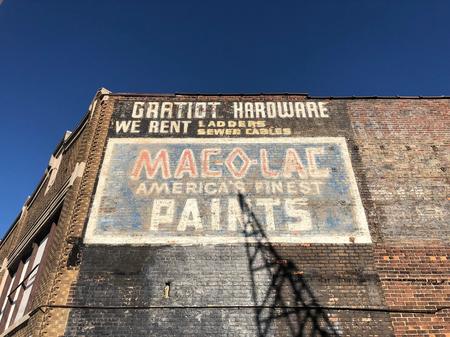Blood & Billboards: New Book Tells the Stories Behind Detroit’s Ghost Signs
The ghosts of Detroit’s former industries are fossilized via old, fading advertisements throughout the city. A local reporter wanted to know more.


Click on the audio player to listen. CultureShift airs weekdays at 12 p.m.
The ghost signs of Detroit add a lot of character to the city’s landscape.
A quick drive unveils fading advertisements from some of the world’s most well-known brands — Carhartt, Faygo and Vernors, which was sold itself as a major national brand with a Detroit HQ in the 1980s.
In the new book Fading Ads of Detroit, Detroit Free Press reporter Robert Allen uses photographs of these old advertisements to unlock long forgotten stories from the city’s past.
“When I was doing research for this book, my key interest was to find the human connection to these signs,” Allen says, including a story about an immigrant who survived a Nazi prison camp in Poland and eventually landed in Detroit searching for the American dream.
As he researched the Mac-O-Lac sign for an old hardware store on Gratiot, Allen uncovered the story of Polish immigrant Kazimierz Nowotny.
“(Nowotny) had been fighting for Poland during World War II (and) got captured,” Allen says. “His family went through some extremely tough times,” including his wife and seven kids.

In Nowotny’s desperation to provide for his family, he ended up “selling his blood so that he could buy groceries,” Allen says. “The Free Press ended up writing this piece about the troubles that the Nowotny family was dealing with at a time when people were pouring into Detroit. A lot people related to that story about this young immigrant family just trying to make it.”
One of the people enthralled with Nowotny’s story? “Somebody who offered Mr. Nowotny a job at Mac-O-Lac Paints,” says Allen.
You can read more stories like this in Allen’s new book Fading Ads of Detroit available through Arcadia Publishing.
